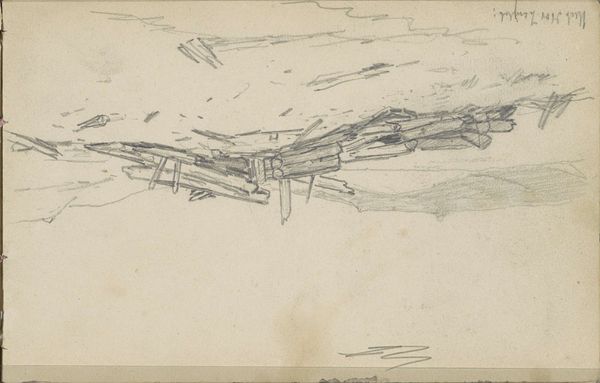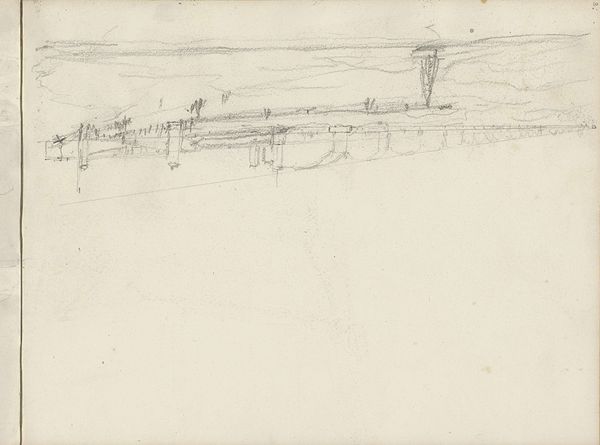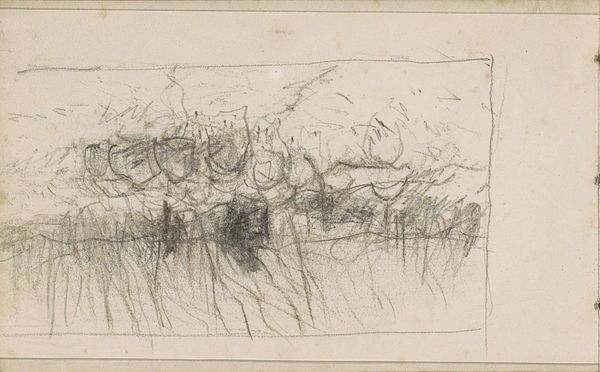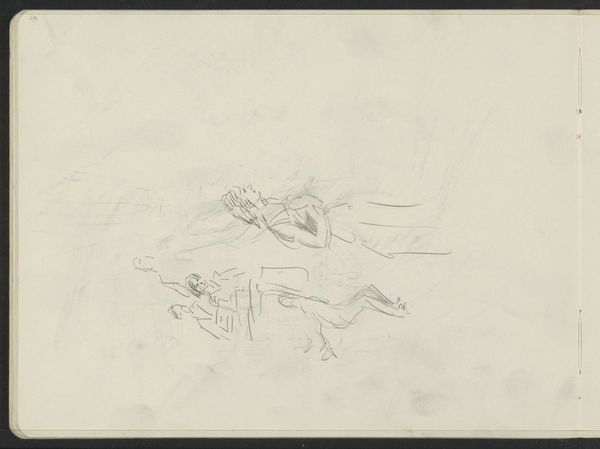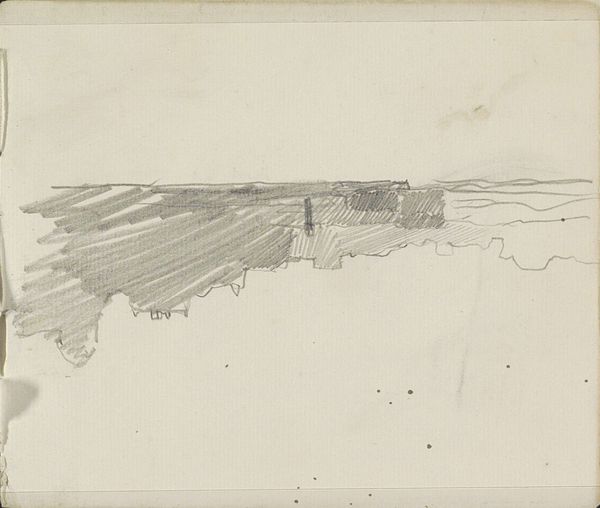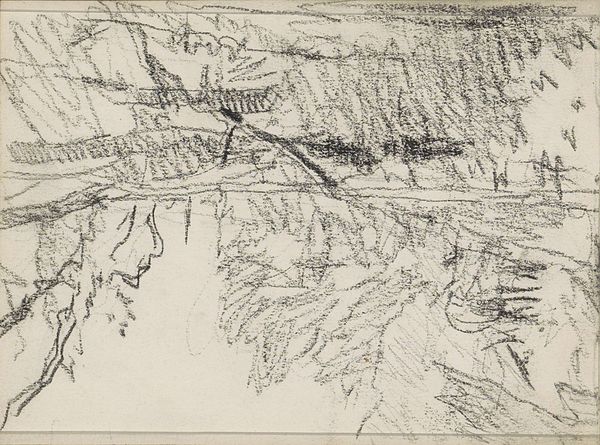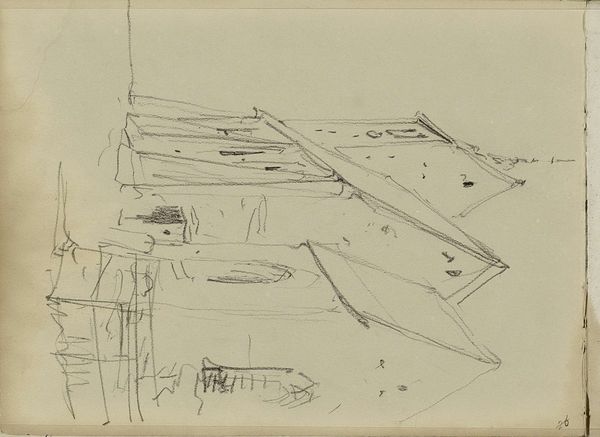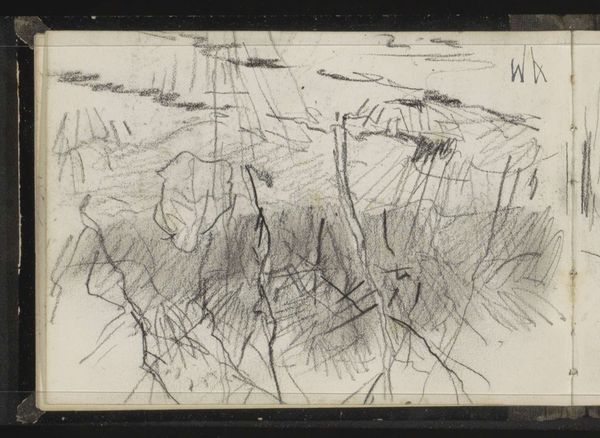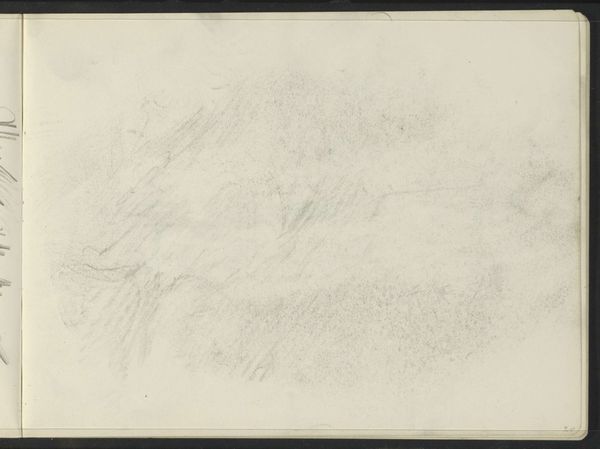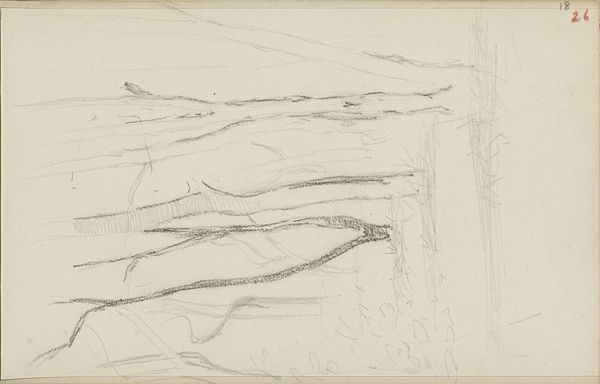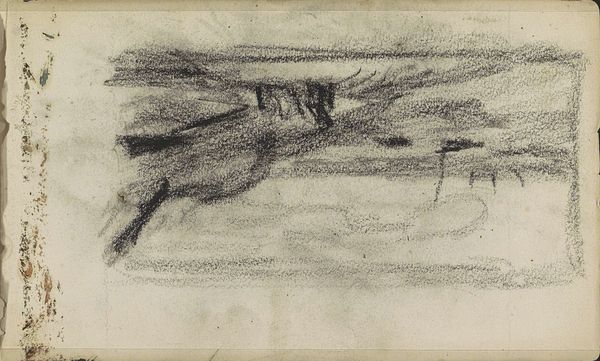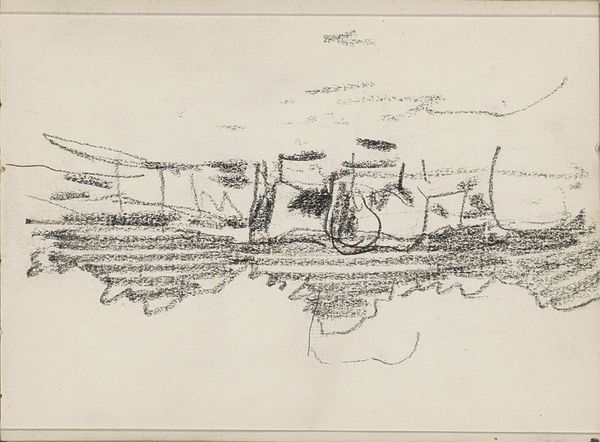
drawing, pencil
#
drawing
#
landscape
#
pencil
#
abstraction
Copyright: Rijks Museum: Open Domain
Editor: This drawing, "Landschap met molens," or "Landscape with Windmills," is attributed to Jozef Israëls and thought to be created between 1834 and 1911. It’s a pencil drawing housed at the Rijksmuseum. The initial impression is almost bleak; there's a real sense of sparseness. What do you see in this piece? Curator: I see a profound commentary on the relationship between labor, land, and national identity being etched in very few lines. Israëls lived during a period of immense social change; the rise of industrialization certainly changed his artistic focus. Note how the windmills, often symbols of Dutch prosperity and ingenuity, appear almost ghostly and diminished in this sketch. Editor: Diminished... I hadn't thought of it that way, but the abstraction does almost mute any sense of obvious progress. Are you saying the setting, being rural and potentially untouched, plays a role? Curator: Absolutely. It is crucial to question whose landscape is being depicted and for what purpose. Consider the farmers or laborers whose lives are intimately tied to this land; this abstraction, almost devoid of sentimentality, may reflect a changing socio-economic reality where traditional agrarian life is threatened. Is this an idyllic view or a subtle critique of progress? Editor: So it becomes more than just a landscape; it becomes a socio-political statement about the time it was created in. Curator: Precisely. By examining the context—Israëls' position in society, the prevailing social conditions, and even the absence of detail—we can decode the embedded narratives related to labor, identity, and belonging. Editor: That is fascinating! I came into this seeing a sketch, but now I see something much more complex. Curator: Art often holds up a mirror to society, sometimes revealing uncomfortable truths that might not always be obvious.
Comments
No comments
Be the first to comment and join the conversation on the ultimate creative platform.
